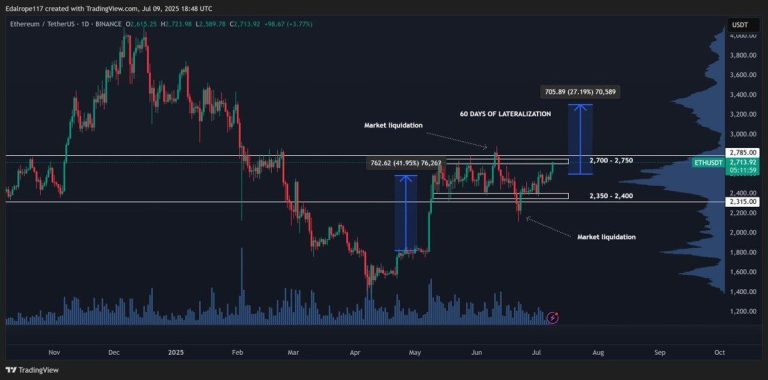
Introduction: The Turbulent World of Ethereum
In the ever-volatile landscape of cryptocurrencies, Ethereum (ETH) has recently found itself at the forefront of a significant price drop, plummeting to a 16-month low of around $2,000. This dramatic shift has left many investors and enthusiasts wondering: what’s behind Ethereum’s downward spiral? As we delve into the reasons, it becomes clear that a combination of macroeconomic pressures, market dynamics, and internal challenges are all contributing factors.
Macro-Economic Pressures and Trade Tensions
One of the primary drivers of Ethereum’s price decline is the broader economic climate. Global trade tensions, particularly those exacerbated by U.S. policies, have created a risk-off sentiment among investors. Cryptocurrencies, often viewed as high-risk assets, tend to suffer when traditional markets turn bearish[1]. Recent announcements of tariffs on countries like Canada, Mexico, and China have further rattled financial markets, impacting investor confidence in cryptocurrencies[1].
Massive Liquidations and Whale Activity
Another critical factor is the significant liquidation events in the crypto space. Large holders, or “whales,” have been offloading their ETH holdings, adding downward pressure on the price. On-chain data indicates that Ethereum’s supply on centralized exchanges hit a 12-month high, signaling heavy selling by major players[1]. Additionally, massive liquidations of long positions on leveraged markets have contributed to the price drop, with ETH longs accounting for a substantial portion of these liquidations[1].
Technical Breakdowns and Bearish Indicators
From a technical standpoint, Ethereum’s price action has been marked by bearish patterns. Analysts point to indicators like the Moving Average Convergence Divergence (MACD) and Relative Strength Index (RSI), which suggest persistent bearish sentiment[1]. These technical breakdowns have led to predictions of further price drops, potentially as low as $1,945 or even $1,200 if momentum doesn’t shift[1].
Competition and Network Challenges
Ethereum faces stiff competition from other blockchain platforms like Solana, which offers faster transaction speeds and lower fees[1]. The rise of Layer-2 solutions has also shifted activity away from Ethereum’s base layer, reducing demand for ETH in some cases[1]. Furthermore, Ethereum’s shift to proof-of-stake with “The Merge” in 2022 was meant to create a deflationary model, but since April 2024, the supply has increased, dampening investor confidence[1].
Recent Events and Market Sentiment
Recent events, such as the Bybit hack, have also played a role in Ethereum’s price volatility. The hack involved over 401,000 ETH and led to market fears of the stolen ETH being dumped, pressuring prices downward[3]. Additionally, rumors of a potential Ethereum hard fork have added uncertainty to the market, further impacting investor sentiment[3].
Conclusion: Navigating the Future of Ethereum
A Path Forward
Despite the current challenges, Ethereum’s future isn’t necessarily bleak. Positive indicators such as declining exchange reserves and institutional interest suggest a potential rebound[1]. Proposed upgrades like EIP-7781 aim to address network performance and restore Ethereum’s deflationary status, potentially boosting sentiment[1]. However, for Ethereum to recover, it must navigate macroeconomic headwinds and overcome critical resistance levels.
In conclusion, Ethereum’s price drop to a 16-month low is a complex issue influenced by a mix of economic, market, and internal factors. As investors and enthusiasts look to the future, it’s crucial to monitor market trends and global developments closely to gauge Ethereum’s next move.
—
Sources:
– TradingView
– GitHub Pages
– Binance







